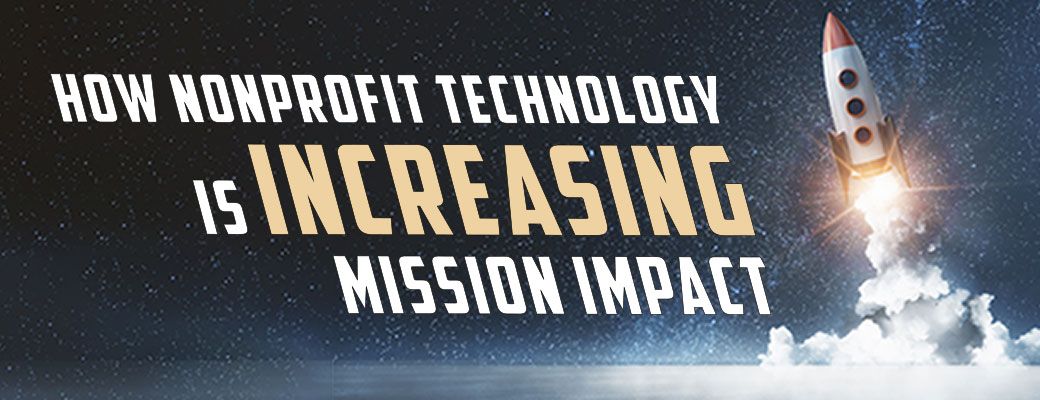How Nonprofit Technology is Increasing Mission Impact

Technology has proven over the years to be a cost-cutting option that lets you do more with less. Surprisingly, nonprofits haven’t come to embrace it as strongly as they should. In a study done by NetChange, they reported that only 11% of nonprofits viewed their digital approach as effective. That’s not a good sign.
Funding is often difficult to come by, so it’s interesting that nonprofits are shying away from technology. On a daily basis, nonprofits are expected to expand their donor base, increase mission impact, and maintain financial security–all of which can be done without a hefty price tag. Here are just a few options that can solve all those issues while coming at little to no cost.
Data Analytics for Reaching More Donors
In today’s world, data reigns supreme. Businesses and nonprofits alike have relied on data to make more informed decisions and reveal opportunities. The biggest problem is a majority of nonprofits are sitting on mounds of data but don’t know how to use it effectively. That’s where Business Intelligence (BI) has played a large role in bridging that gap.
BI doesn’t sound like it belongs in the nonprofit sector, but that couldn’t be further from the truth. BI takes data and presents it through easy-to-read graphs that can reveal top donors, track campaigns, and even measure mission impact. All of this gives nonprofits a leg up on reaching out to a larger base of donors while identifying opportunities to increase donations.
Better Communication and Funding Opportunities
Communication between nonprofits and donors was never easy in the past. Unless you were a well-known organization, people had to be on a mailing list or attend a fundraising event to learn more about your outreach. Nowadays, it’s as simple as logging onto Facebook.
In 2015, Facebook expanded its platform to allow crowdfunding for nonprofits. As a result, over $1 billion in donations has been raised. On top of that, Facebook has provided an opportunity for nonprofits to share their mission with new volunteers and contributors across their various platforms, including Snapchat and Instagram. With 65 million users logging in every day, you can gain exposure quickly if you build a strong campaign. Like the saying goes, “If you build it, they will come.”
Heightened Security
Unfortunately, nonprofits are highly susceptible to fraud compared to their for-profit counterparts. This is often due to high turnover rates, lack of training, and poor internal controls. While fraud can hurt your organization’s reputation and finances, it steals from your mission as well. This mostly happens because nonprofits aren’t as equipped to handle these situations as many businesses are.
One of the best defenses to keep this from happening has been to limit access to those you trust. By having features like an audit trail and individual user rights, you can limit the roles people have within your organization while keeping a record of your transactions. By keeping these security measures in place, you can protect from those who steal from your organization and from your mission as well.
Technology Leads to a Better Nonprofit
While technology has shown it can be effective, it’s up to nonprofits to embrace it. These tools can help reach new donors, boost outreach, and secure financial data without putting a huge dent in your budget. Plus, the money you save can be used toward your mission. The point of technology is to make our lives better, so it only makes sense that nonprofits should embrace it.
